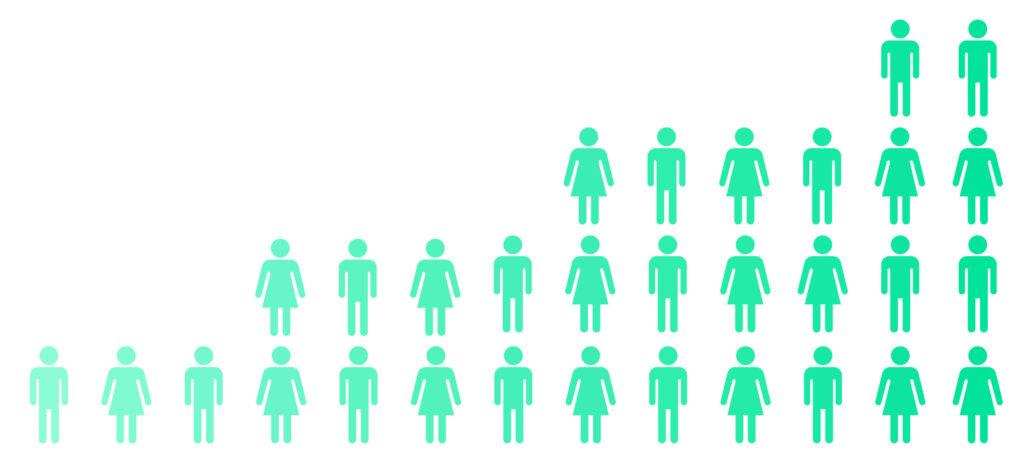Every industry is subject to stagnation; the life science industry is no exception. However, recent disruptive innovation in pharma – whether via new technologies, care models, or policy decisions—has shaken up the landscape, forcing major players and green entrants alike to adapt to this dramatic realignment.
But what does that look like? What trends and technologies are changing the drug discovery and development paradigm?
Let’s dive in.
You can get more innovative thinking in your advisory boards.
Disruptive innovation in pharma
According to Bernard H. Munos, the founder of the InnoThink Center for Research in Biomedical Innovation, disruptive innovation in pharma is defined as, “A transformation of the pharmaceutical industry driven by new technology, new business models, or policy decisions that improve therapy and create value for patients and society in a way that could not be achieved through other means.”
In other words, disruptive innovation is a necessary shift in technologies and philosophies in order to fix the inherent problems underlying the pharmaceutical pipeline, which include:
- A dated business model – R&D infrastructure is exorbitantly costly. According to the Tufts Center for the Study of Drug Development, the average cost of bringing a new drug to market has increased by a billion dollars over the last decade to $2.6 billion. And only a small percentage of drugs ever receive regulatory approval from Phase 1. In a way, regulatory affairs can stifle the development of drugs. What is regulatory affairs in pharma? Regulatory affairs is basically quality and damage control in all stages of drug development to ensure the success of any drug. And when failure does occur, far too often, it happens in later stages of development, which only adds to the cost of failure. While pharma compliance can help minimize loss, it can also limit innovation.
- Scale – Because development is so costly and carries such a high risk, large legacy companies tend to dominate the R&D landscape. But as with massive ships, larger drug companies are slow to course correct—to react or adapt to market shifts. They’re less likely or able to incorporate new technologies, tools, or ideas. Not to mention, they’re often burdened by bureaucracy, which only adds to the mire.
- Risk-averse culture – Because larger companies tend to have low-risk tolerance, they are more resistant to new ideas. This risk aversion creates a culture where it’s safer to focus on already successful projects rather than taking risks on innovation. Even if a great idea manages to float to the top, it may take years to put any steps into action. And by that point, a smaller, more nimble company may have already seized on that opportunity.
- Measuring the value of innovation – It’s often hard to quantify the value of innovation and progress. You may not be able to measure it in dollars and cents. Or, it may take years for the fruits of that labor to come to bear. Because of this, pharmaceutical companies that are preoccupied with and beholden to demonstrable ROI will inevitably push back against ideas or technology that don’t produce immediate returns.
These trends demonstrate significant flaws with the drug development pipeline mode the major threats to the pharmaceutical industry. Such issues are only exacerbated by stringent regulations, which add to the difficulty and price of producing new products and services.
To survive, the industry must produce better and more affordable products via disruptive innovation.
Disruptive innovation—four major technologies and trends in pharma
Over the past decade, disruptive innovation has begun to take root. The pharmaceutical industry has undergone a rapid evolution thanks in part to the following technologies and trends, such as:
#1: Patient centricity
One of the most impactful changes to the life science industry is the movement away from point of service care to a more modern, consumer-focused, value-based care system.
Digital technology has enabled patient-centricity not just in the pharmaceutical industry but also in the healthcare industry. Thanks to the advent of the internet and smartphones, it’s now easier than ever for healthcare consumers to control their healthcare education, find information, and shop around for medical products or services. As a result, modern patients are empowered. They’re better informed, more connected, and expect to receive personalized assistance.
Instead of being passive participants, subject to the whims of medical professionals, consumer-patients want to play an active role in every step of their healthcare journey. They want more information and to have their voice included in every decision and conversation about their health. According to Deloitte:
“Genuine patient centricity means having a deep understanding of the patient’s experience of their condition – what the individual patient values and needs, their attitudes and behaviors, and what is most likely to improve health outcomes. Listening to the voice of the patient provides insights that can inform every stage of a pharma company’s business, from drug discovery to winning regulatory approval to post-market disease management.”
For the pharma industry looking to embrace this disruptive innovation, there are many ways you can improve patient centricity, including:
- Improving transparency throughout the entire R&D pipeline
- Adopting new contracting and pricing models
- Creating collaborative healthcare ecosystems
- Partnering with patient advocacy groups
- Entering into digital partnerships that improve communication and collaboration with patients
- Automating processes and optimizing digital channels
- Instilling collaborative healthcare ecosystems
These actions can help you bring drugs to market that better reflect patients’ needs and desires while also helping patients and providers reach better outcomes.
#2: COVID and digitalism
COVID-19 catapulted the pharmaceutical and life sciences industry to the frontlines of the pandemic fight. As several major players raced to produce a viable vaccine, smaller companies sought to roll out tertiary products and devices that furthered the mobilization effort.
In response, record-setting funding poured into the pharmaceutical industry.
This all-hands-on-deck ethos accelerated many of the changes already occurring in the industry, which softened reservations, making key thought leaders more receptive to further disruptive innovation.
For instance, patients and providers wanted safer ways to receive care but at a safe distance. This helped introduce telehealth services to a massive group of patients who might have otherwise been less open to virtual doctor’s visits. Over time, both parties grew more accepting of the practice until it became a new normal.
This is indicative that, given the right circumstances and the proper motivation, both patients and healthcare providers are willing to embrace new technologies and methodologies.
#3: Next-generation sequencing (NGS) of genomes
In recent years, there has been a wave of next-generation genome sequencing technologies hitting the market, capable of sequencing DNA in a short amount of time.
These technologies may empower life science companies to turn genomic information into effective diagnostics and therapies. As a result, Deloitte reports that over the next few years, more than 85% of global life science firms will leverage genomic data—either purchased or attained via partnerships.
According to Deloitte, this may open up an entirely new world of research:
“To date, about 90 percent of clinical studies have focused on 2,000 genes—just 10 percent of the whole genome. Why is that? Rather than exploring the unknown, researchers generally prefer to concentrate on genes that are already being studied extensively. Federal funding dedicated to exploring the lesser-known parts of the genome could push researchers to expand their focus.”
This disruptive technology will have three primary applications:
- Cancer genetics – To identify mutations that cause carcinogenesis and tumor growth, which may open up an entirely new spate of treatments for cancer subtypes.
- Mendelian genetics – To identify mutations that cause and underlie rare diseases.
- Microbiology – To detect genetic strains of microorganisms that could cause public health crises, and help identify antibiotics and treatments for those issues.
#4: Supercomputing and AI
The future of pharma will be intrinsically linked to data and supercomputing. Innovations like AI and machine learning programs can read, sort, and analyze vast quantities of data helping to facilitate anything from genomic research to biotechnology to pharmaceutical R&D.
Armed with these advanced insights, pharmaceutical companies are poised to optimize their drug pipelines, leading to cheaper, faster, and more effective clinical trials. That, in turn, could reduce the risk of innovation, thus incentivizing more life science companies to keep pushing boundaries.
According to Global Data’s State of the Biopharmaceutical Industry, of the 198 surveyed pharmaceutical industry professionals, 36% said they expect AI to be the single most critical technology that will impact the industry.
Kit Whitney, MSc Director of Thematic Research, said: “The pharmaceutical industry is under increasing pressure, with rising costs of drug development, manufacturing, and marketing eroding profit margins. As well as drug discovery, AI can be applied across various other functions, allowing for improved clinical trial design and recruitment, smarter and more efficient supply chains, and targeted sales and marketing.”
While the roles of generative AI and ChatGPT in pharma are yet to be fully explored, the industry can benefit from these time- and effort-saving tools.
Within3 and disruptive innovation
The last few years have revitalized a flagging and conformist pharmaceutical sector. Popular conventions have been challenged, and the landscape has been shaken up. As a result, the industry is primed for continued disruptive innovation.
That ethos lies at the heart of Within3’s mission. Our insights management platform helps pharmaceutical companies and medical device producers to identify key experts, engage key stakeholders in focused discussions, and deliver answers to your organization’s most pressing questions.
Request a demo to learn more.






